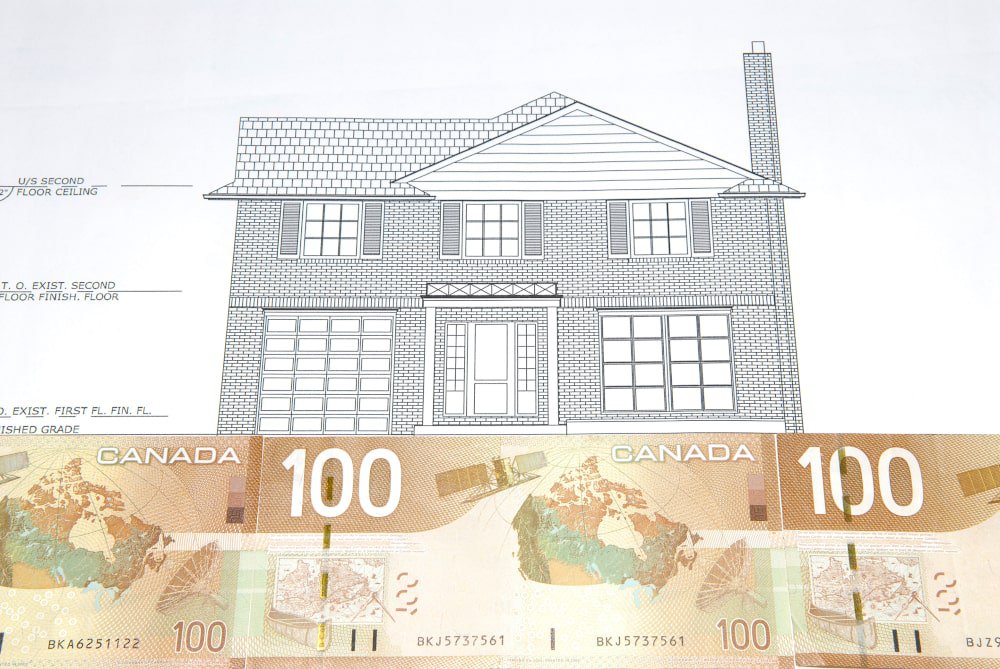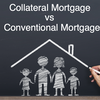Down Payments 101: Everything You Need to Know

If you are a first-time homebuyer, you might have questions about the logistics of a down payment in relation to your mortgage. What is the minimum down payment required for a mortgage? Is it possible to acquire a zero down payment mortgage? What is the traditional value of a down payment? Luckily, navigating your down payment is not as difficult as it seems. By understanding the options available to you and arming yourself with key information, you can significantly improve your odds of success.
What is a Down Payment?
When buying a new property, you do not necessarily need to pay the entire purchase price upfront. You will be able to pay off the majority of your property’s purchase price over time through the use of a mortgage, provided that you are able to qualify for one. A down payment is the portion of your property’s purchase price that you are paying up-front, usually from your own funds, or from funds gifted to you by an immediate family member. It is one of the highest immediate costs you will encounter when buying a home.
The Higher the Down Payment, the Lower the Mortgage
When purchasing a property, you can decide how big or small you want your down payment to be, as long as it falls above the legal minimum limits. You must also be able to qualify for a mortgage to cover the remainder of the purchase price. The legal minimum down payment will vary based on the purchase price of your home, the location of your home, and other factors. Your lender will subtract the value of your down payment from the purchase price of your home, and your mortgage will cover the remaining cost.
Putting down a larger down payment means reducing the size of your mortgage. The more money you borrow, the more interest you will have to pay monthly. A larger down payment up-front can save you tens of thousands of dollars in the long run.
Is a Down Payment the Same Thing as a Deposit?
Although they are sometimes confused, a down-payment is not the same thing as a deposit. You make the full down payment only at the time of closing the property sale. You put down a deposit before the sale is closed, usually when making a purchase offer. The deposit is the money you pay up front to show your commitment to purchasing a particular property, whilst the down payment is the sum of money you are paying at the time that the sale is completed to gain eligibility for financing.
Most often, you will provide your deposit in the form of a cheque made out to a real estate agent’s brokerage. If the seller accepts your offer, the deposit cheque is held in a trust account until the deal officially closes. After this, the deposit is subtracted from the total of your down payment and the rest of the down payment can then be made. Although unlikely, it may be possible in certain situations to receive a refund on your deposit if you walk away from the sale or it does not go through. Down payments, however, are only paid out during the time that the actual sale is being completed, and so you cannot obtain a refund. The only way to refund your down payment is to re-sell your property and hope to get at least your down payment amount returned to you, unless the value of the property has changed.
Down Payments and Mortgages: The Basics
What is Mortgage Default Insurance?
If the value of your down payment makes up less than 20% of your property purchase price, you will be legally required to purchase mortgage default insurance. Most financial institutions in Canada cannot provide mortgages that exceed 80% of the purchase price. If your down payment falls below 20% of your purchase price, it will push your mortgage outside the established limits. The only way to get around this is to insure your mortgage through either the CMHC (Canadian Mortgage and Housing Corporation), Sagen (formerly Genworth Financial), or Canada Guaranty, and pay a fee called a mortgage default insurance premium. The purpose of this insurance is not to protect you; mortgage default insurance protects your lender in case you fail to make your mortgage payments.
The total value of your mortgage default insurance premium can range from 0.6% to 4.5% of your mortgage, depending on the size of your down payment. The bigger you make your down payment, the smaller your premium will be. You can pay this premium up-front, as a lump sum, or by splitting it up and adding it to your existing monthly mortgage payments. Keep in mind that if you add your premium payments into your mortgage, you will also need to apply the mortgage interest rate to the premium, costing you more in the long run. Whether you pay your premium as a lump sum or add it to your mortgage, it will be subject to provincial sales tax if you are in Ontario, Quebec, or Manitoba. This tax is due upfront in full upon closing.
You may be required to purchase mortgage default insurance even if your down payment exceeds the 20% minimum. If you have a poor credit score or an unreliable source of income, your lender may require you to insure your mortgage before working with you. There are also instances in which you can be disqualified from mortgage default insurance. If your property purchase price is upwards of $1 Million CAD, the minimum down payment is already 20%, negating your qualification for mortgage insurance. Furthermore, homes with an amortization period greater than 25 years are also ineligible for mortgage default insurance.
Refinancing your mortgage also disqualifies you from purchasing new mortgage default insurance, unless your original mortgage was insured against default, then you can port that insurance over to the newly refinanced mortgage to take advantage of potential interest rate reductions.
Your Loan-To-Value Ratio and its Effect on Your Mortgage
The Loan-To-Value Ratio (LTV) measures the size of your mortgage compared to the total purchase price of your home. Putting down a larger down payment reduces the size of your mortgage, and therefore the size of your LTV ratio.
The Loan-to-Value Ratio is a key measure of creditworthiness for many lenders. Having a lower LTV ratio reduces your perceived risk to lenders and may qualify you for lower interest rates as a result. When applying for a mortgage with a financial institution or third-party lender, they will conduct a loan assessment. A high LTV ratio can be a factor that makes you a perceived lending risk to some of these institutions. This can result in an interest rate hike to offset the risk associated with your loan. Higher interest rates allow a lender’s risk appetite to increase in certain situations.
Having a low LTV ratio means that you have more equity in your home from the get-go. This is a green flag for many lenders. Because you have “skin in the game," you are seen as less likely to default on your mortgage. Additionally, if you fail to make your mortgage payments and your home is foreclosed upon, it is more likely that the lender can regain the value of the loan from the resale of your home if your LTV ratio was low from the get-go.
Can my Down Payment be Included in the Mortgage?
Legally, every homeowner in Ontario must make a down payment. However, there is an option called a no money down mortgage through which 100% of the money used to purchase the home (including the down payment) is borrowed. This adds the cost of your down payment to your monthly mortgage, but it is important to note that you will now be paying interest on the full purchase price of your home, thereby increasing your overall costs. If you want to buy a house with a no money down payment mortgage, you must have a credit score of at least 650 and a very stable source of income. Otherwise, most vendors will not want to work with you. This is a great option for people with stable income and strong financial planning skills who wish to stop renting or increase their net worth through asset ownership. Still, there are many risks that you should carefully consider before heading down this path.
How to Put Down Your Down Payment
The first step to putting down a down payment is determining its size. The value of the payment you put down will impact the amount of money a lender can give you, the types of mortgages you qualify for, and the interest rates you will have to pay on your mortgage. It is not a decision you should take lightly.
While you can alter the size of your down payment depending on your preferences and income, you must meet the legal minimum requirements, along with the minimum qualifying requirements that are specific to you and your credit and income situation. The minimum value of your down payment will vary based on the purchase price of your property.
- A property whose purchase price falls below $500,000 CAD will only require a down payment valued at 5% of the purchase price.
- A property whose purchase price falls between $500,000 CAD and $999,999 CAD will require a down payment valued at 5% of the purchase price up to $500,000 CAD ($50,000 CAD) plus 10% of the remaining purchase price.
- A property whose purchase price is greater than $1 Million CAD will require a down payment valued at a minimum of 20% of the purchase price.
- It is important to note that if you have poor credit or an unreliable stream of income, your lender may require you to put down a higher down payment than the legal minimum requirements.
Despite these minimums, the average down payment (in Canada and the US) is valued at 20% of the property purchase price. Of course, this figure varies slightly from province to province and state to state.
While it may be tempting to put down the smallest down payment you are legally entitled to and qualify for, there are many advantages to putting down a larger down payment. In competitive housing markets, sellers often receive multiple offers. Having a larger down payment can give you a notable advantage when trying to close a home, and potentially not require you to have a condition of finance on the purchase and sale agreement. To determine this, we recommend getting a formal mortgage pre-approval before beginning your search for a new home.
This demonstrates to the seller that you have solid finances and are highly likely to get approved for a loan ensuring that you will not back out of the sale due to a financing condition. A larger down payment can also improve your credibility as a buyer, making you appear less prone to risk and less likely to haggle sellers on prices or closing costs.
The Potential Disadvantages to a Larger Down Payment
Of course, while a larger down payment certainly seems more attractive, it is important to only put down as much money as you can afford. A good rule of thumb is that your down payment should come out of your personal savings. Taking out a loan to afford your down payment is one of the easiest ways to get completely swallowed up by debt. If you find yourself in this situation, it may be wise to decrease the size of your down payment. Here are a few other disadvantages to large down payments that you should consider:
- Making a larger down payment may reduce your ability to contribute to your long-term saving goals.
- Making a larger down payment may prevent you from affording your monthly expenses.
- A larger down payment can prevent you from using your savings to pay for other moving expenses such as transportation fees, furnishing costs, renovations, or decorating costs .
- Making a down payment as large as you can afford will completely deplete your savings; these will take a long time to save up again.
- A sizeable down payment can tie up all your savings in equity. While owning equity in a home is a sound investment in the long run, as property prices continue to rise, real estate prices often take ages to go up. You can redirect that same money towards more lucrative short-term investments.
What if I Cannot Afford to Make My Down Payment?
The Home Buyer’s Plan
If you are unable to afford your down payment, one great option may be the Canada Revenue Agency (CRA)’s Home Buyer’s Plan (HBP). The Home Buyer’s Plan allows you to withdraw $60,000 from your Registered Retirement Savings Plan (RRSP) without taxation, so long as you use this money towards the purchase of a home and you repay the amount withdrawn within the next 15 years. If you have a spouse or common-law partner, you may each withdraw up to $60,000.
Before signing up for the HBP, you should consider whether you can make the repayments within the allocated time frame. It is also important to note that while you typically do not pay income taxes for money you have borrowed, this does not apply to money you have borrowed from your RRSP. These RRSP taxes are waived under the Home Buyer’s Plan, but if you cannot repay your withdrawals within the fifteen years you are allotted, all the money you borrowed becomes taxable. If taxed, the amount withdrawn from your Registered Retirement Savings Plan will be added to your yearly income and taxed at the highest marginal rate.
You should also take the time to consider whether or not the funds you withdraw from your Registered Retirement Savings Plan as part of the Home Buyer’s Plan will negatively impact your retirement funds and savings overall. You may lose potential growth in your RRSP through this withdrawal, so it is imperative to ensure you can afford it.
The First-Time Homebuyer Incentive
Another great option for buyers struggling to afford their down payment is the Government of Canada’s first-time homebuyer incentive program. Through this plan, the government of Canada can offer first-time buyers 5% of an existing home’s purchase price or 5-10% of a newly built home’s purchase price. This price, called “the incentive,” must be repaid after 25 years or at the moment when the property is sold. The value of the incentive to be repaid will be based on the property’s fair market value at the time of repayment. You can also repay the incentive at any time without facing penalties.
Participating in the first-time homebuyer incentive also makes you eligible for a shared equity mortgage with the Government of Canada. In a shared equity mortgage plan, the government offers you financing without interest. This reduces your monthly mortgage costs, allowing you to allocate more funds to your down payment.
How to Save Up More Money for a Down Payment
Of course, the easiest way to make sure you can afford your down payment is to plan ahead and begin saving up your money early. Here are five great strategies you can use to increase your savings:
- Create a dedicated savings plan. Open a separate savings account that is dedicated to your down payment. Contribute funds into the account as often as possible, redirecting gifts, bonuses, and other sources of unexpected income into this account as opposed to your traditional savings. Try and set aside a portion of each paycheque, however small, to deposit into the account. Over time, your savings will grow; the earlier you start this initiative, the better off you will be when it comes time to purchase your first home.
- Pay off your credit card debts. Credit card debts have high interest rates that can topple you financially and destroy your credit score. The sooner you pay off these debts, the faster your financial situation will improve. Having a higher credit score will also increase your chances of securing a more favourable mortgage contract with lower interest rates. If your credit score is too low, even after paying off your debt, you can bump it up by making small purchases and paying them off immediately. Over time, this will raise your score back to an acceptable level.
- Cut your monthly spending. If owning a home is one of your top priorities, you can help yourself achieve that goal by cutting out luxuries or unnecessary expenses for a few months. Try following a weekly meal plan instead of ordering takeout every day. Limit the number of vacations you are taking. Cancel any unnecessary music or movie streaming subscriptions. By slashing your spending, you leave yourself more money with which to boost your savings and pay off your existing debts.
- Acquire a second stream of income. One of the easiest ways to increase your revenue is to take on a side hustle or second job. With remote jobs becoming ever more available and retail workers being in dire demand, taking on a few part-time shifts can make a stark difference in your overall income. The greater your income, the more money you can contribute to your savings.
- Redirect your savings away from other projects. If you are simultaneously working towards several different financial goals, it might be challenging to build savings for your down payment. If homeownership is your biggest priority at the moment, you may want to consider pulling money from other saving plans and placing some of your other financial goals on the back burner for now.
At the end of the day, there is no magic shortcut to saving for a down payment. It will require a great deal of time, planning, and organized effort to achieve your homeownership goals. Once you succeed, however, the payoff is infinitely rewarding.
If you are looking to obtain a mortgage for a new home or property and want to learn more about your options, including your down payment options, schedule a free consultation with a knowledgeable and experienced residential mortgage broker at Clover Mortgage today!





